REVIEW – Mystery Ranch IFAK
ITEM: IFAK Pouch
MANUFACTURER: Mystery Ranch
DESCRIPTION:
A self-contained IFAK (Individual First Aid Kit) pouch to be worn on the man for immediate emergency use. Generally loaded with medical supplies to deal with immediate trauma such as gunshot, blast or breathing problems caused by those anti-social interactions between people we has seen so much coverage on the television in the last few years. I know for some of the readership however, that they haven’t been watching the television too much, they’ve been creating or living in the very news stories the rest of us have been watching.
REVIEW NOTES:
Righto then, let me quite clear that I am not, in any way, shape or form, any kind of expert about medical stuff. I’m a first aider only, with specific first aid training given by the military when I was serving. This entailed VERY basic treatment of such lovely afflictions as gunshot wounds, and blast injuries to a very basic level, using simple DRABC principles.
A lot of the latest developments in combat first aid have passed me by because of the latest round of deployments are way after my time. Such things as the re-introduction of common usage of the tourniquet for treatment of traumatic blood loss is something I need to refresh myself on, since in the peacetime ADF, tourniquets were absolutely verboten.
As such, if any of my information is in any way incorrect in this review, please feel free to correct me. It should be noted, that this is one of those items I haven’t had a chance to properly test and check for function under first aid training. Nor has it been taken out field to test for functionality and how it interfaces with other equipment.
As stated, the purpose of these IFAK pouches is to carry immediate individual medical supplies for the wearer (and only the wearer, as the old saw goes: don’t donate your medical supplies for your mate – you may need it yourself in the next few seconds) for major battlefield injuries and allow immediate battlefield treatment in two levels:
a. Self treatment by the individual when able. On a battlefield, it is assumed and taught that the casualty will (if able) start self treatment of the wound/s
b. Allow team mates and much harried combat medics to stabilise a patient with a minimum of effort in order to allow casualty evacuation off the battlefield to higher echelons of hospital care.
Generally, immediate supplies for breathing and major blood loss are carried. Carrying of the IFAK pouch is often dictated by the chain of command so that first responders can immediately access the vital equipment necessary to sustain life.
One thing I will not be discussing during this review is the best placement of this pouch on the fighting load. Such a discussion would take a major article alone, and is currently outside the scope of this review. Also not discussed in any real detail is recommended contents for an IFAK pouch. I’d like to encourage the reader to seek some other sources for appropriate training on such vital topics.
This item was first released for public viewing at SHOT 2011. I’ve been very fortunate by being allowed to have a look at one of the prototypes of this pouch. I don’t believe this pouch is currently in production, but I’m told that it might be in the near future.. This is an opportunity to play with something quite rare.
MATERIALS:
Main pouch body is 500D material. This pouch was supplied in ever popular multicam.
Fastex buckles, high quality YKK zips, and elastic bungee shock cord has also been used.
LAYOUT:
The MR IFAK pouch is approximately 22cm (height) x 13cm (width) x 10cm (depth) or 8.6in x 5.1in x 3.9in for all you old fashioned Imperial folk. It occupies 2 PALS rows on a platform. It would seem to occupy a slightly larger volume as a double magazine pouch.
The pouch can be attached to a MOLLE platform via the usual weave tabs and snap attachment. When attached to a platform, the pouch is fixed and unable to be rapidly removed like other IFAK pouches available in the market.
Standard of construction is on par for Mystery Ranch – that is to say, excellent. All edges are seam taped. High quality materials and construction is what one would expect.
The external surface is shown below.
It’s initial appearance really gives it away as a Mystery Ranch product by the twin zips. This layout, secured by a fastex buckle against inadvertent opening, zips are fitted with cord pull tabs that can be used by gloved or wet fingers.
There are two fabric loops at the end of the zips. I would imagine these loops could be used to secure items to the outside of the pouch.
The lid of the pouch has a Velcro secured small pocket. I’m led to believe that rubber gloves can be stored in this small space. Although small items like very small ampoules of drugs could conceivably be stored in this volume as well.
It’s when the contents of this IFAK pouch are needed, that the fastex buckle is undone, and the tab pulled down to reveal the contents ready for use. The tab is pulled down like a tongue, allowing the sides to open up like a flower, very similar to the layout of the tri-zip arrangement on Mystery Ranch’s 3-day Assault packs. Inside this pouch is internal organisation of several small pockets to carry sundry items and shock cord for loose items like tourniquets.
The main body has a pocket with shock cord loops for securing loose items. A single shock cord loop at the top and a segmented loop at the bottom that will accept a large item like a field dressing or tourniquet sized item at the bottom, with two smaller loops for small thin items like sharpie pens. It’s quite possible that this was designed to accommodate morphine vials, but since I’ve never actually been issued such things, I’m way out of my depth.
The right side flap has 2 looped sections of shock cord that could be used for bandages or tourniquet sized items in one loop and a sharpie marker or other long thin item in the other. It should be noted that a Sharpie marker or chinagraph pencil (chinagraph tends to work better in the wet such as that found in tropical areas) for those cheap buggers amongst us, is carried to mark the casualty with the time that morphine was administered, or a tourniquet applied, in order to help combat medics and field hospital medical teams keep track of dosages and blood flows.
The left side flap is a pocket of sufficient size to carry an Australian issue field dressing.
PERSONAL ASSESSMENT:
The internal organisation allows a fairly wide variety of immediate medical equipment to be carried. Such items could conceivably be packed according to the users tastes and intended usage order. What I mean by this, is that items needing immediate usage (like shell dressings) can be grabbed and slapped on as an IA (Immediate Action) whilst other items (like CASEVAC pro-forma’s or the American 9-line casualty report card) can be grabbed as the treatment progresses.
Since this is the first real IFAK pouch I’ve had a chance to examine, it’s difficult to compare to other offerings in the market. So what is listed below is a very basic summation of my immediate thoughts.
PROS –
Very well made pouch, that offers access to internal contents quite nicely.
CONS –
One small thing I’ve noticed on this pouch, is the zips are a bit stiff to pull. I’m not sure if this is because they’re new, and have yet to be broken in properly. Although adrenaline is a wonderful thing for imparting Hulk-like strength when really needed.
Whilst useful, the cord pull tabs on the zips could pose a snag risk – although this can be mitigated by tucking the pull tabs under the fastex buckle when the IFAK pouch is fully sealed up.
Although the clam shell opening similar to Mystery Ranch’s range of assault packs is a nice idea for being able to access the contents of the pouch when needed, I’m not sure if this really is a useful feature for a pouch like this. What I mean by this, is that a soldier’s fighting load is often a compromise in space available on the load carrying harness, which often has the extra problem of also carrying the soldiers body armour, where a lot of pouches are competing for a limited space. This means the IFAK pouch may be jammed between some other vital equipment pouches on the fighting load. When the soldier has to use other equipment in conjunction with their fighting load, then we start to see interface problems. Such things as vehicle seatbelts and backpack straps are the two examples that spring to mind immediately. Since Murphy was an eternal optimist, this could mean that the IFAK pouch could be needed when there are a lot of constraints on actually opening it. Whether this remains a valid point to consider is open for further analysis, or someone with more experience than me to clarify.
SUMMARY:
Interesting design from those boys in Montana, and an excellent opportunity for me to expand my knowledge.
Posted in Military, Packs & Webbing, Specialist by 22F with no comments yet.

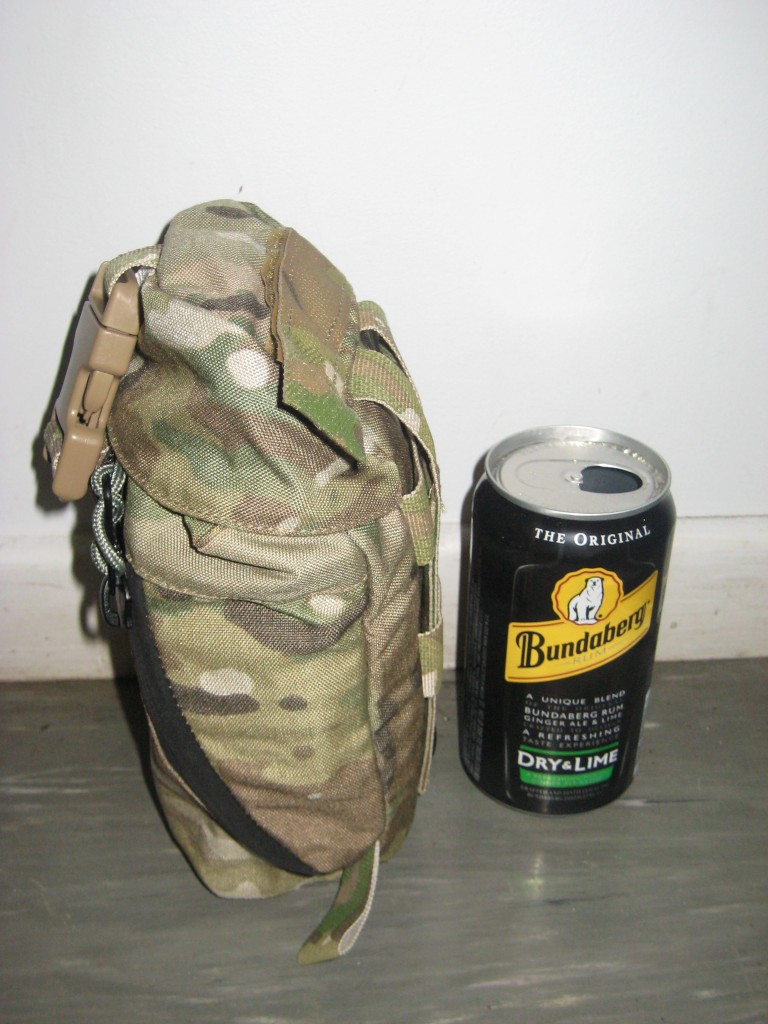
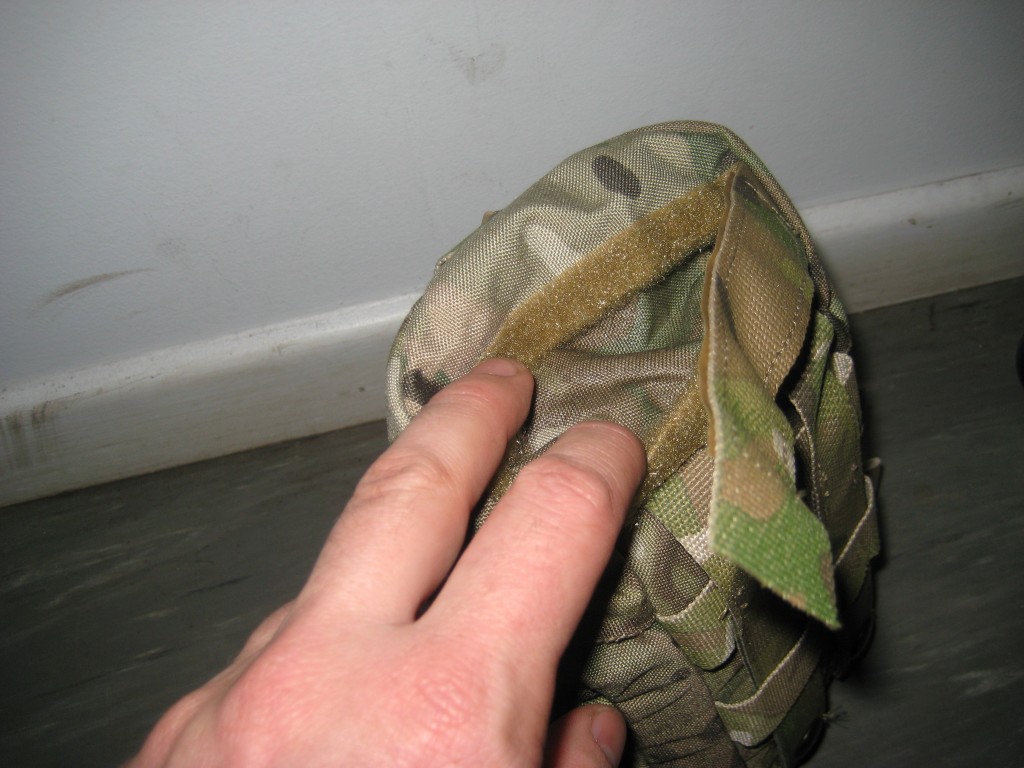
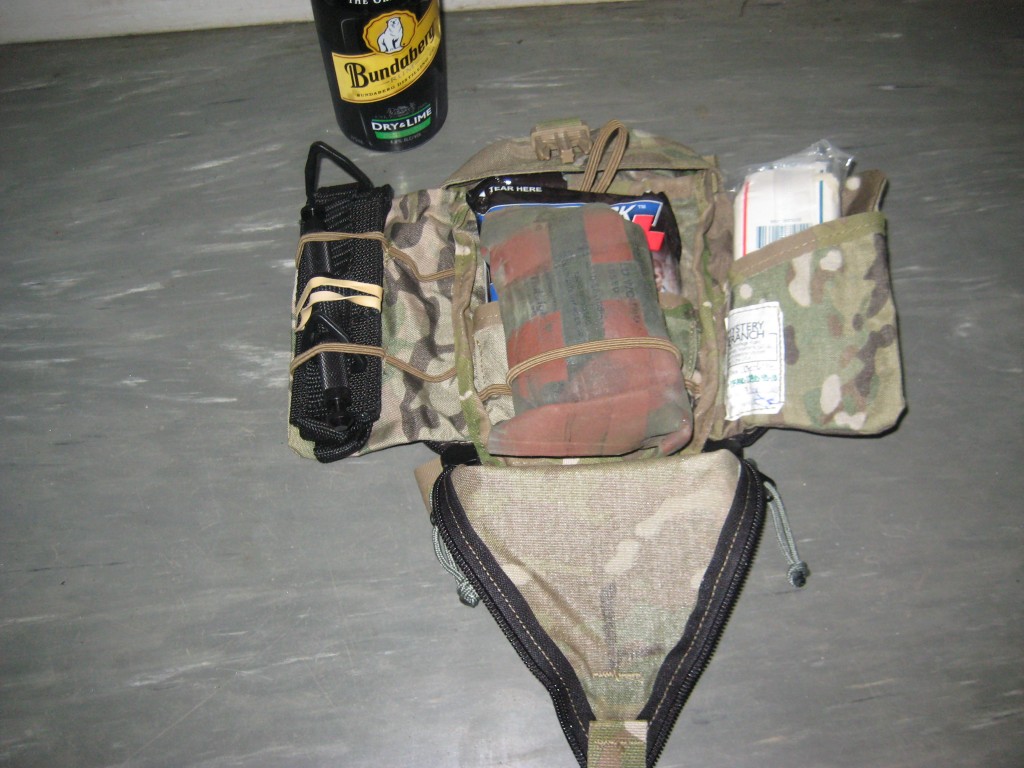
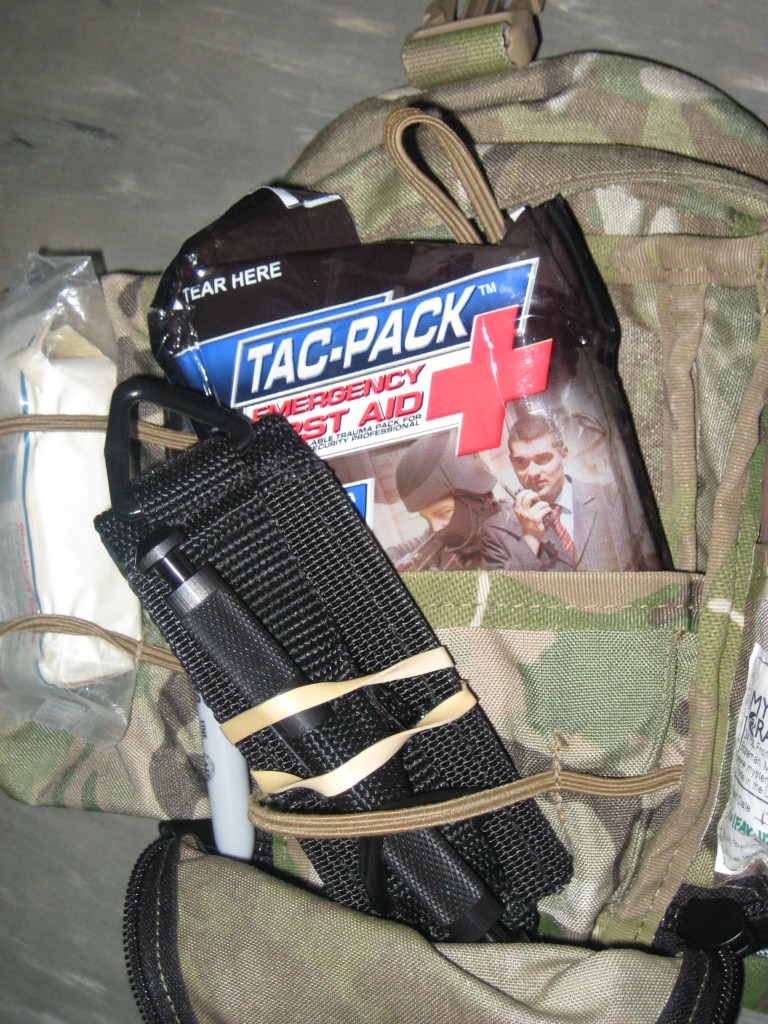
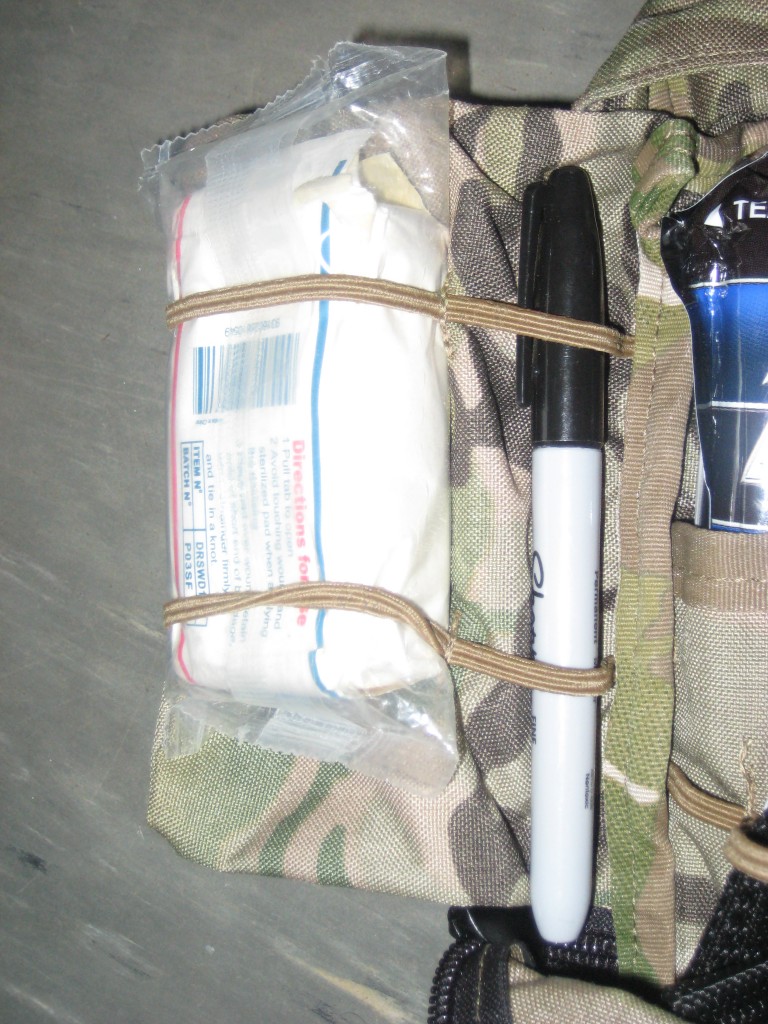
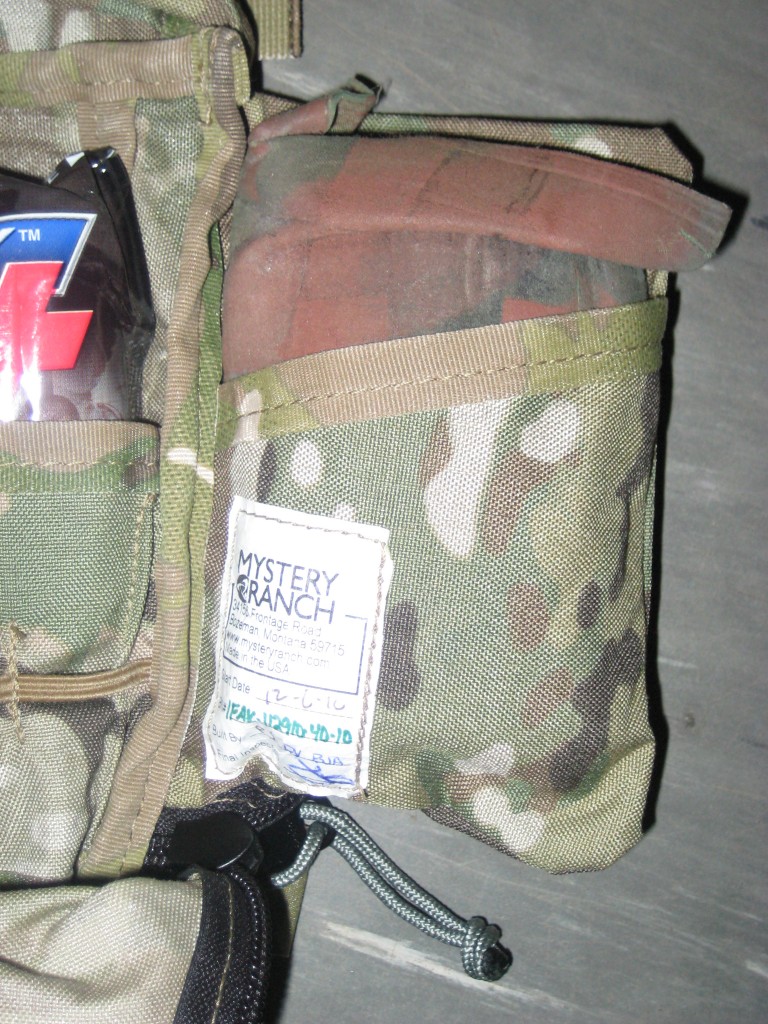
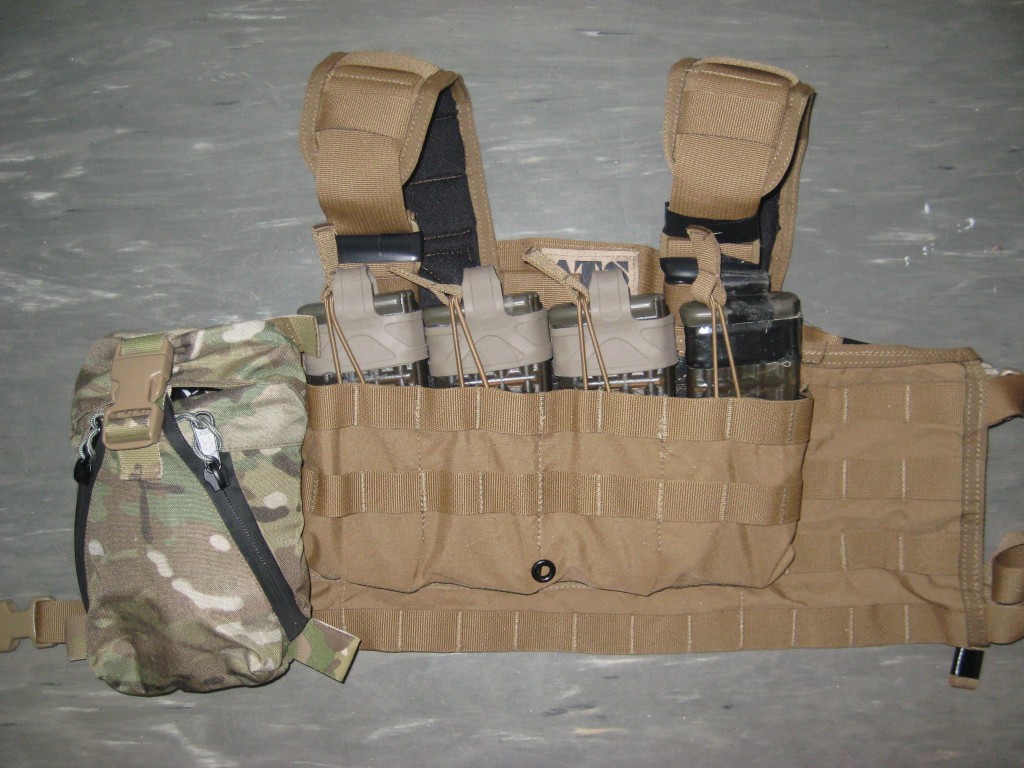
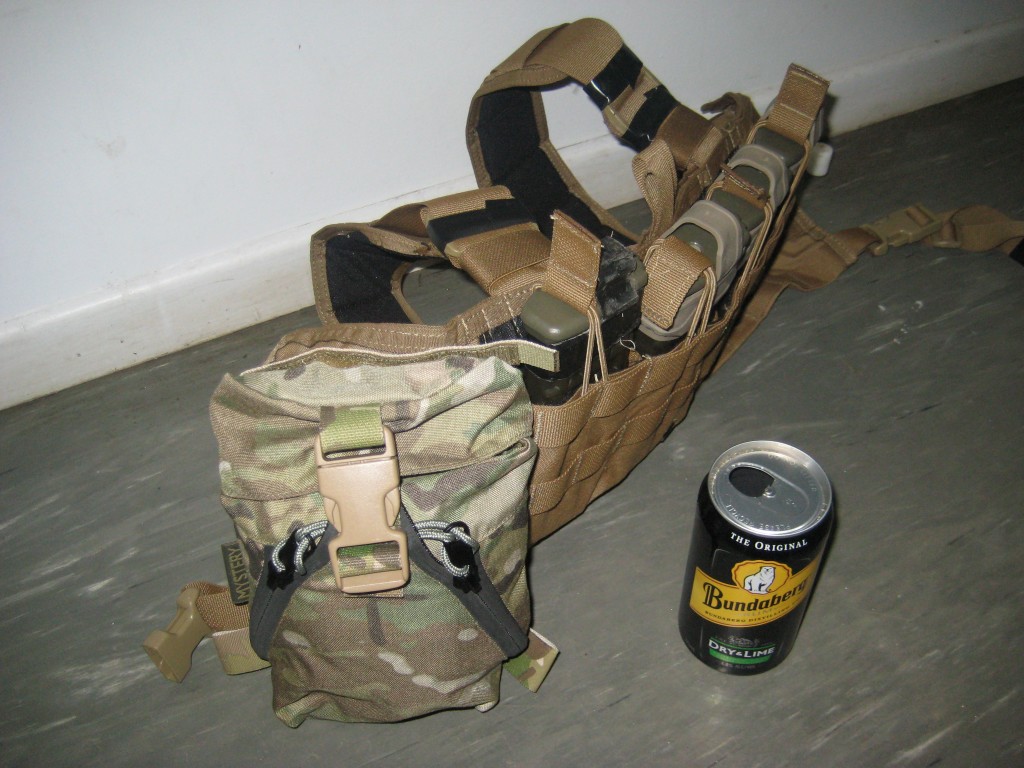
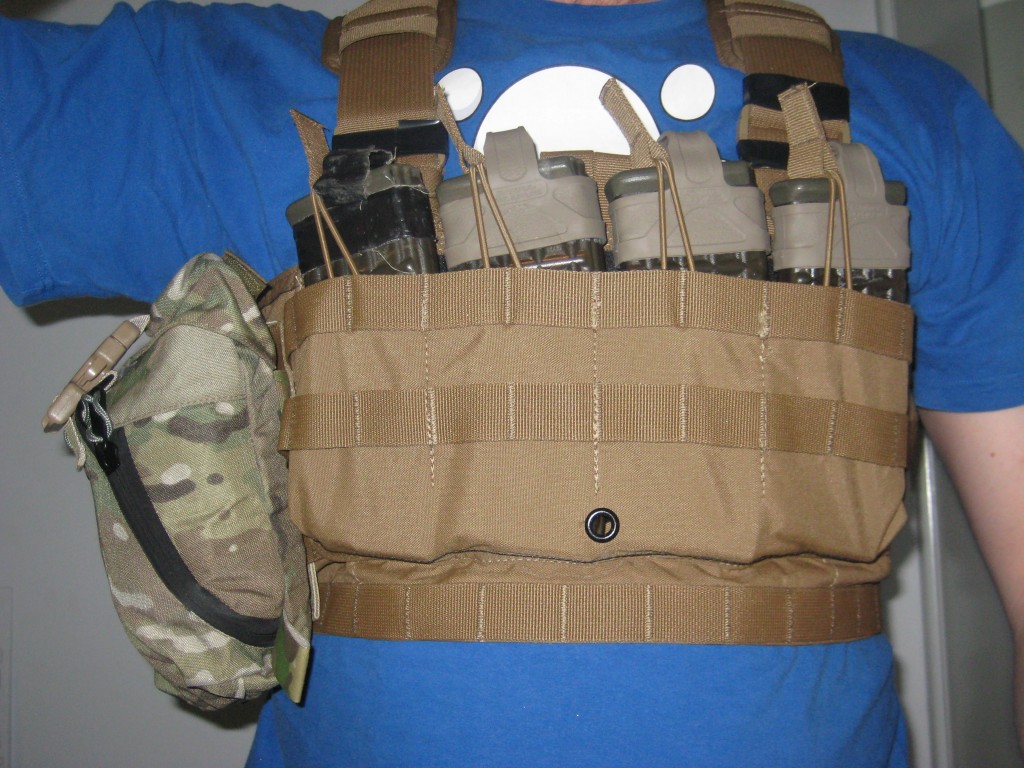

Leave a Reply